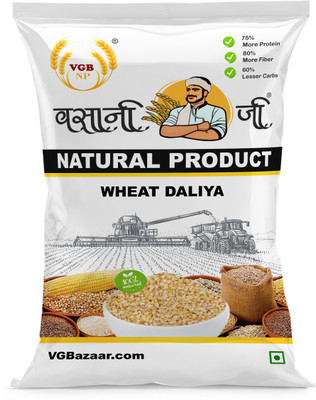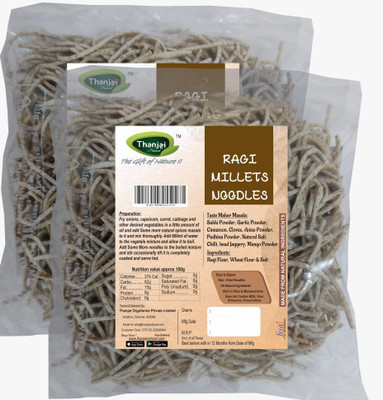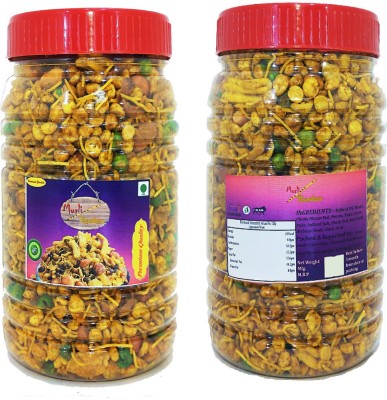

Sale ends in07 hrs : 34 mins : 44 secs
Share
KINAAV Medium Sago/Sabudana Sago (375 g)
Be the first to Review this product
₹113
₹149
24% off
@301.333/kg
Available offers
T&C
T&C
T&C
T&C
Delivery
Check
Enter pincode
Delivery by10 Oct, Friday
?
View Details
Services
- Cash on Delivery available?
Seller
Description
Sago is a starchy substance derived from the spongy center, or pith, of various tropical palm stems, particularly the Metroxylon sagu palm native to Southeast Asia. It is a gluten-free, carbohydrate-rich food that is easy to digest and serves as a dietary staple in parts of Southeast Asia. Sago is widely sold as flour or small, white, pearl-like globules.
Primary sources
Sago Palm (Metroxylon sagu): This is the principal source of sago, extracted by crushing and kneading the starchy pith of the palm's trunk. Before flowering, the palm's trunk is packed with starch, and a single palm can yield up to 800 pounds of dry starch.
Cassava Root: In many countries, particularly India, sago is made from the starch of the cassava or tapioca root and is known as sabudana.
Cycads: The name "sago palm" is also misleadingly used for cycads like Cycas revoluta. Extracting starch from these plants is more complex and requires careful processing to remove toxins.
Uses and culinary properties
As a staple food: In New Guinea, Malaysia, and Indonesia, sago flour is mixed with boiling water to form a glue-like paste called papeda, which is eaten with fish and vegetables.
As pearls: The pearls are created by mixing the starch with water and partially heating it. When cooked, they become translucent, soft, and spongy. This form is popular in many desserts, including Indian kheer (pudding) and Malaysian sago gula melaka.
For fasting: In India, cassava-derived sago (sabudana) is a popular food for fasting days due to its high-energy, gluten-free, and easy-to-digest nature.
In other dishes: Sago is used to make crackers in Malaysia (keropok lekor), pancakes, and thickening agents for soups and sauces.
Nutritional profile
Sago is primarily composed of carbohydrates, with very low levels of protein, fat, fiber, and most vitamins and minerals. This makes it a quick source of energy, but not a nutritionally complete food. It does contain small amounts of calcium and iron.
To prepare sago pearls, you must first rinse and then soak them in water. The cooking time will vary depending on the size of the pearls:
Soak: Rinse the pearls thoroughly under cold water to remove excess starch. Then, soak them in just enough water to cover them for at least 4–6 hours, or overnight.
Boil: Bring a pot of water to a boil and add the soaked sago pearls. Stir gently to prevent them from sticking together.
Simmer: Reduce the heat and simmer for 10–15 minutes, or until the pearls turn translucent with a small white dot in the center.
Rest: Turn off the heat, cover the pot, and let it stand for 5–10 minutes until the pearls are completely clear.
Rinse: Strain the cooked sago and rinse with cold water to remove any remaining starch and prevent clumping
Beyond the kitchen, sago is also used in other industries:
Textile manufacturing: The starch is used in a process called "sizing" to stiffen and strengthen textile fibers.
Adsorbent: The waste from sago palm processing is being researched for its potential use in cleaning up oil spills.
Read More
Specifications
In The Box
| Pack of |
|
| Sales Package |
|
General
| Brand |
|
| Model Name |
|
| Type |
|
| Quantity |
|
| Maximum Shelf Life |
|
| Is Perishable |
|
| Organic |
|
| Dietary Preference |
|
| Polished |
|
| Container Type |
|
| Caloric Value |
|
| Regional Speciality |
|
| Manufactured By |
|
| Model Number |
|
| Nutrient Content |
|
| Net Quantity |
|
| FSSAI Number |
|
| Ingredients |
|
| Manufacturing Process |
|
| Additives |
|
| Usage Instructions |
|
| Fortified |
|
| Allergens Included |
|
Additional Features
| Other Features |
|
| Key Features |
|
Dimensions
| Height |
|
| Width |
|
| Depth |
|
| Weight |
|
| Other Dimensions |
|
Legal Disclaimer
|
Be the first to ask about this product
Safe and Secure Payments.Easy returns.100% Authentic products.
Back to top



















